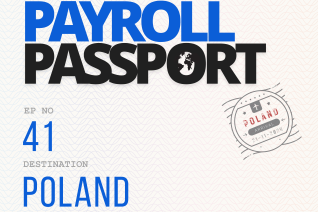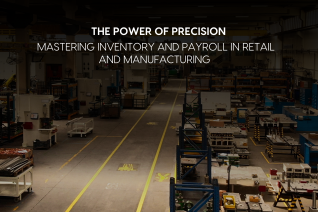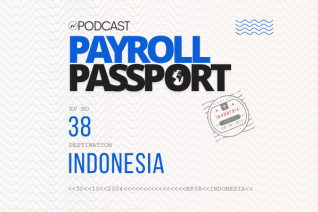Predicting Attrition and Prescribing Retention Strategies for Employees

In today’s competitive business landscape, retaining top talent is crucial for organizational success. Employee attrition, or turnover, can be costly. Replacing an employee can cost between 50% and 200% of their annual salary, depending on their role and level of expertise. Employee attrition affects not only the financial bottom line but also team morale and productivity. Predictive analytics and data-driven strategies offer a proactive approach to understanding and mitigating attrition.
Understanding Employee Attrition
Employee attrition refers to the loss of employees through resignation, retirement, or other forms of departure. High attrition rates can indicate underlying organizational issues, such as poor job satisfaction, inadequate compensation, or lack of career development opportunities. Understanding the reasons behind attrition is the first step in addressing it.
The Role of Predictive Analytics
Predictive analytics leverages historical and real-time data to forecast future events. In the context of employee retention, predictive analytics can identify patterns and trends that signal an employee’s likelihood of leaving the organization. Companies using predictive analytics to identify at-risk employees can reduce turnover by up to 20%. These tools analyze various factors, such as job performance metrics, engagement levels, and demographic data, to predict attrition risk.
Key Predictive Factors
- Job Satisfaction: Low job satisfaction is a significant predictor of attrition. Surveys and feedback tools can help gauge employee satisfaction levels.
- Performance Metrics: Consistently low performance may indicate disengagement or dissatisfaction.
- Engagement Scores: Regular engagement surveys can provide insights into how connected employees feel to their work and the organization.
- Demographic Data: Age, tenure, and role within the company can influence attrition rates. For example, younger employees or those with shorter tenures may be more likely to leave.
YOU MAY ALSO BE INTERESTED IN I Global Payroll on the Move Ep 1: Tailor-made Payroll for your Organization
Building a Predictive Model
Creating an effective predictive model involves several steps:
- Data Collection: Gather relevant data from various sources, including HR records, performance reviews, and employee surveys.
- Data Cleaning: Ensure the data is accurate and free from inconsistencies.
- Feature Selection: Identify the most relevant variables that influence attrition.
- Model Training: Machine learning algorithms are used to train the model on historical data.
- Validation and Testing: Validate the model’s accuracy using a separate dataset and adjust as necessary.
Implementing Retention Strategies
Once a predictive model is in place, organizations can develop targeted retention strategies to address the identified risk factors.
Personalized Career Development: Offering personalized career development plans can enhance job satisfaction and engagement. Employees who see a clear path for growth within the organization are less likely to seek opportunities elsewhere.
Competitive Compensation and Benefits: Regularly reviewing and adjusting compensation packages to remain competitive in the market can help retain top talent. Benefits such as flexible working hours, health insurance, and wellness programs also play a crucial role.
Employee Recognition Programs: Recognizing and rewarding employees for their contributions can boost morale and job satisfaction. Implementing regular recognition programs can create a positive work environment.
Work-Life Balance Initiatives: Promoting a healthy work-life balance is essential for employee well-being. Offering flexible work arrangements, remote work options, and encouraging time off can reduce burnout and increase retention.
Mentorship and Support Networks: Establishing mentorship programs and support networks can help employees feel more connected and supported within the organization. These initiatives can provide guidance, foster professional growth, and enhance job satisfaction.
Continuous Monitoring and Improvement: Retention strategies should be continuously monitored and adjusted based on feedback and changing organizational needs. Regularly reviewing attrition data and employee feedback can help identify new trends and areas for improvement.
ALSO READ I Enhancing Employee Onboarding with Streamlined Payroll Processes
Impact of Remote Work on Attrition and Retention
Increased Flexibility: Remote work offers employees greater flexibility, which has been shown to improve job satisfaction and reduce turnover.
The average annual turnover rate across industries is around 19%, which can vary significantly by sector. For example, the tech industry often sees higher turnover rates, sometimes exceeding 30%. Still, a major tech company reported that its remote workers were 13% more likely to stay in their current jobs for the next five years than on-site workers.
Work-Life Balance: Remote work significantly enhances work-life balance, a critical factor in employee retention. A survey conducted by a global HR firm found that 98% of remote workers expressed a desire to continue working remotely, at least some of the time, for the rest of their careers.
Reduced Commute Stress: Eliminating the daily commute can lead to higher job satisfaction and lower attrition rates. A study by a leading business school revealed that employees who commute for more than 45 minutes are 40% more likely to leave their jobs.
Importance of Company Culture in Retention Efforts
- Employee Engagement: A strong company culture fosters employee engagement, which is directly linked to lower attrition rates. For example, a multinational corporation found that their highly engaged teams showed 21% greater profitability and 59% less turnover.
- Recognition and Rewards: Recognizing and rewarding employees for their contributions can significantly boost retention. According to a survey by a prominent HR association, 68% of HR professionals believe that employee recognition positively impacts retention.
- Career Development Opportunities: Providing opportunities for career growth and development is essential for retaining top talent. A report by a professional networking site indicated that 94% of employees would stay at a company longer if it invested in their career development.
Key Pillar in Organizational Stability
Remember, improving employee retention is an ongoing process. By taking action today, you're investing in the long-term success and stability of your workforce. Predicting employee attrition and implementing effective retention strategies are critical for maintaining a stable and productive workforce.
By leveraging predictive analytics and data-driven insights, organizations can proactively address attrition risks and create a supportive work environment that fosters employee satisfaction and loyalty. Investing in these strategies not only reduces turnover costs but also enhances overall organizational performance. Your journey towards improved employee retention starts now!
Latest Resources
Stay informed with latest updates
If you're curious and have a thirst for knowledge pertaining to the HR, payroll, and EOR universe, don't miss out on subscribing to our resources.















